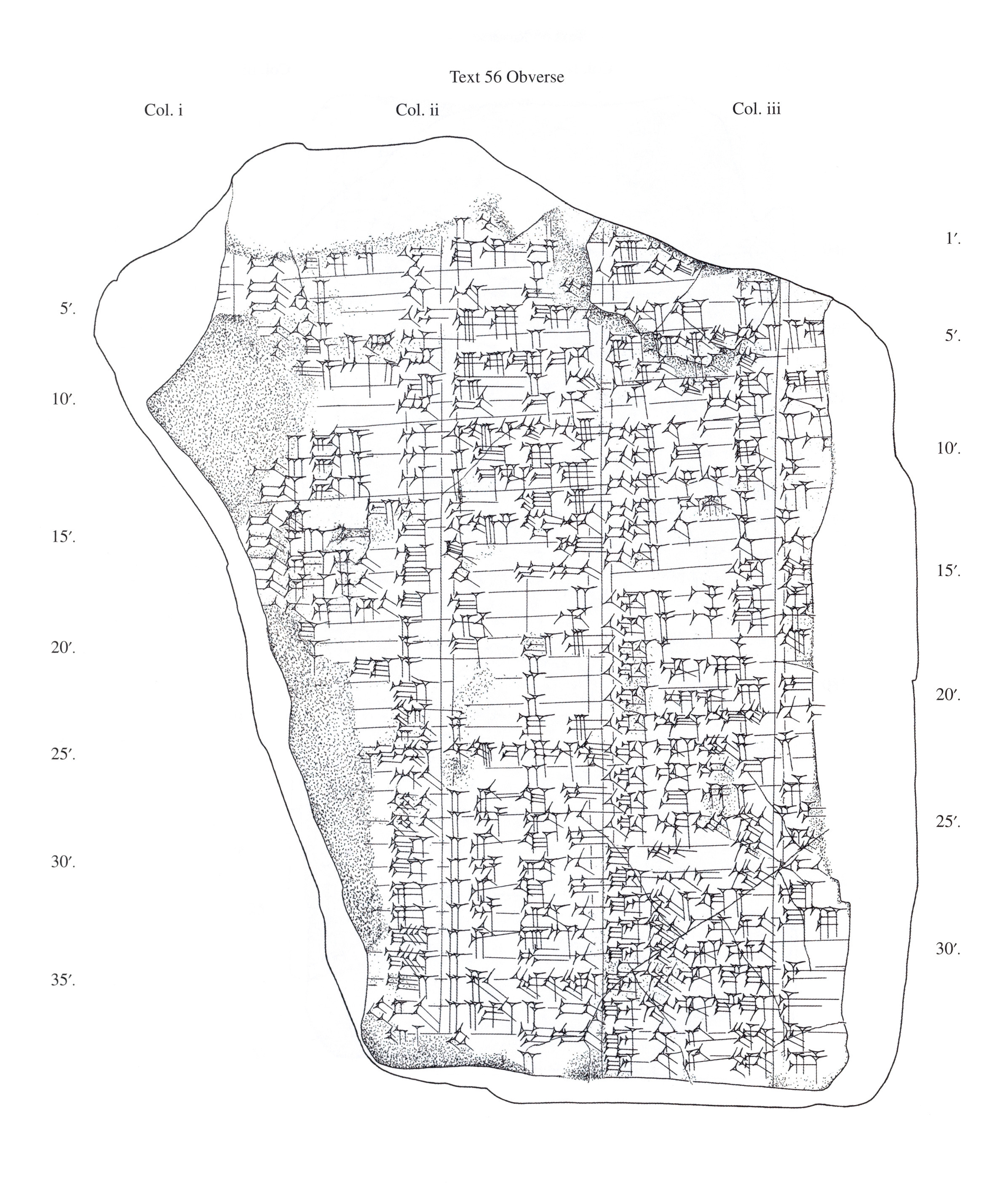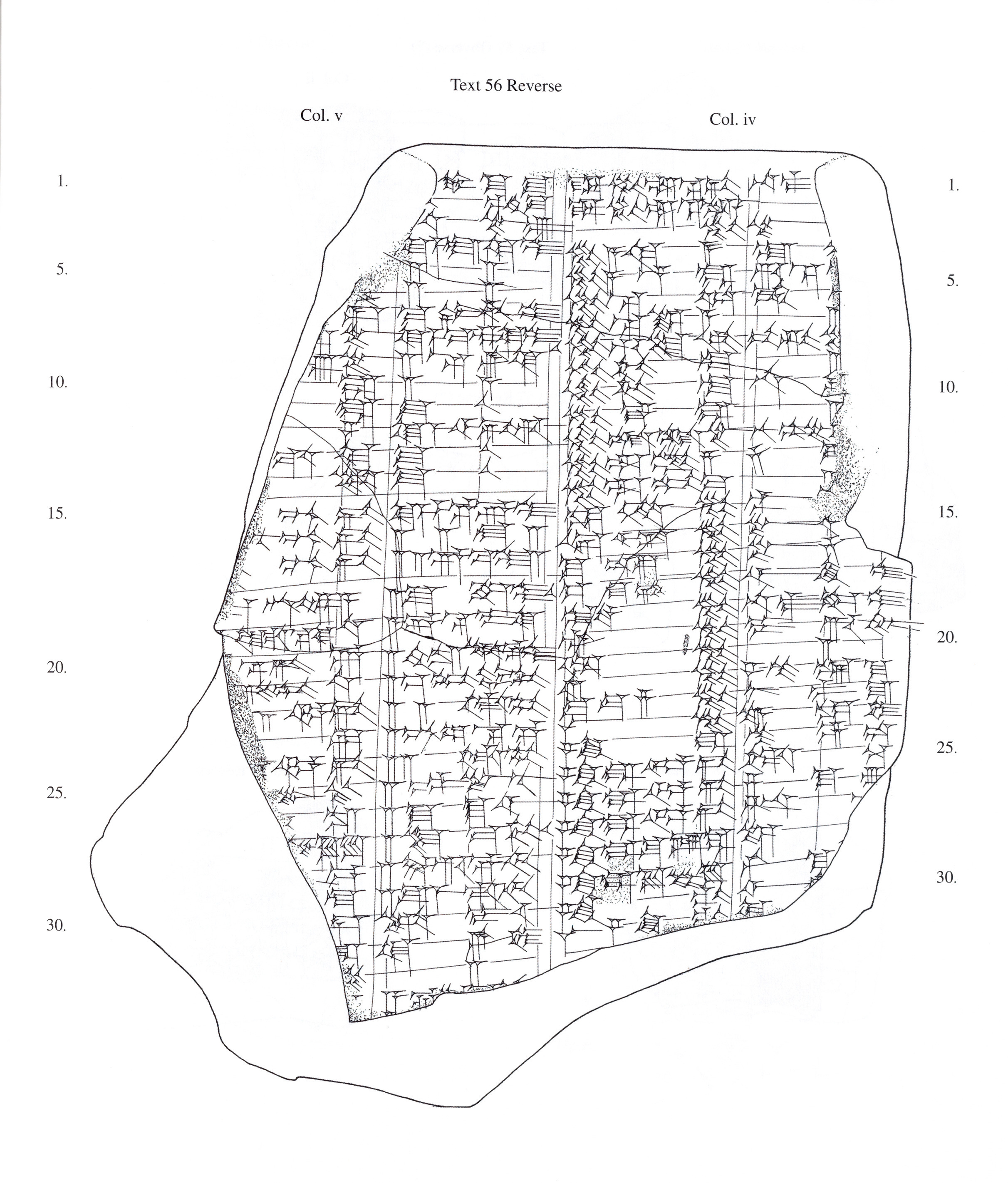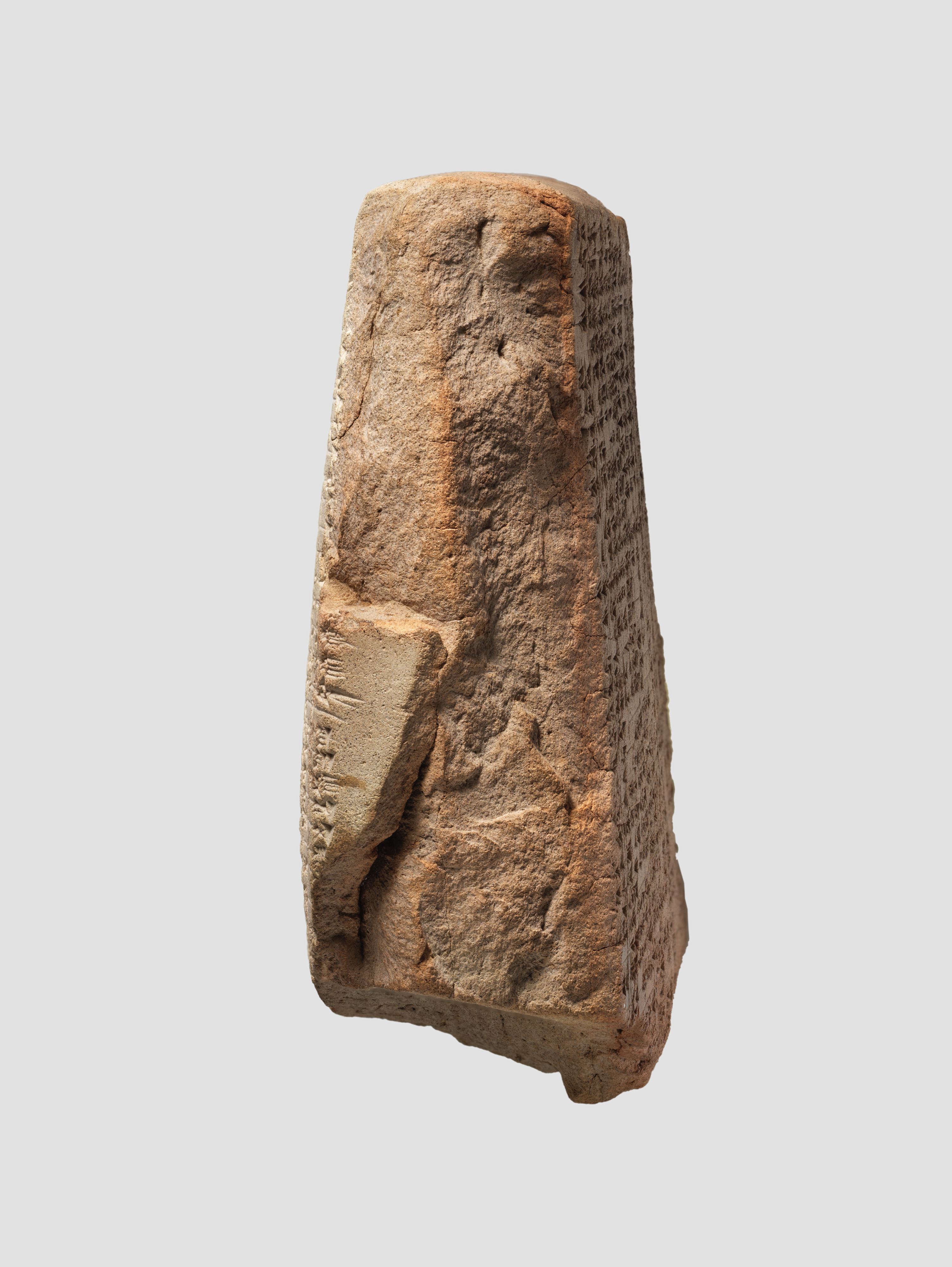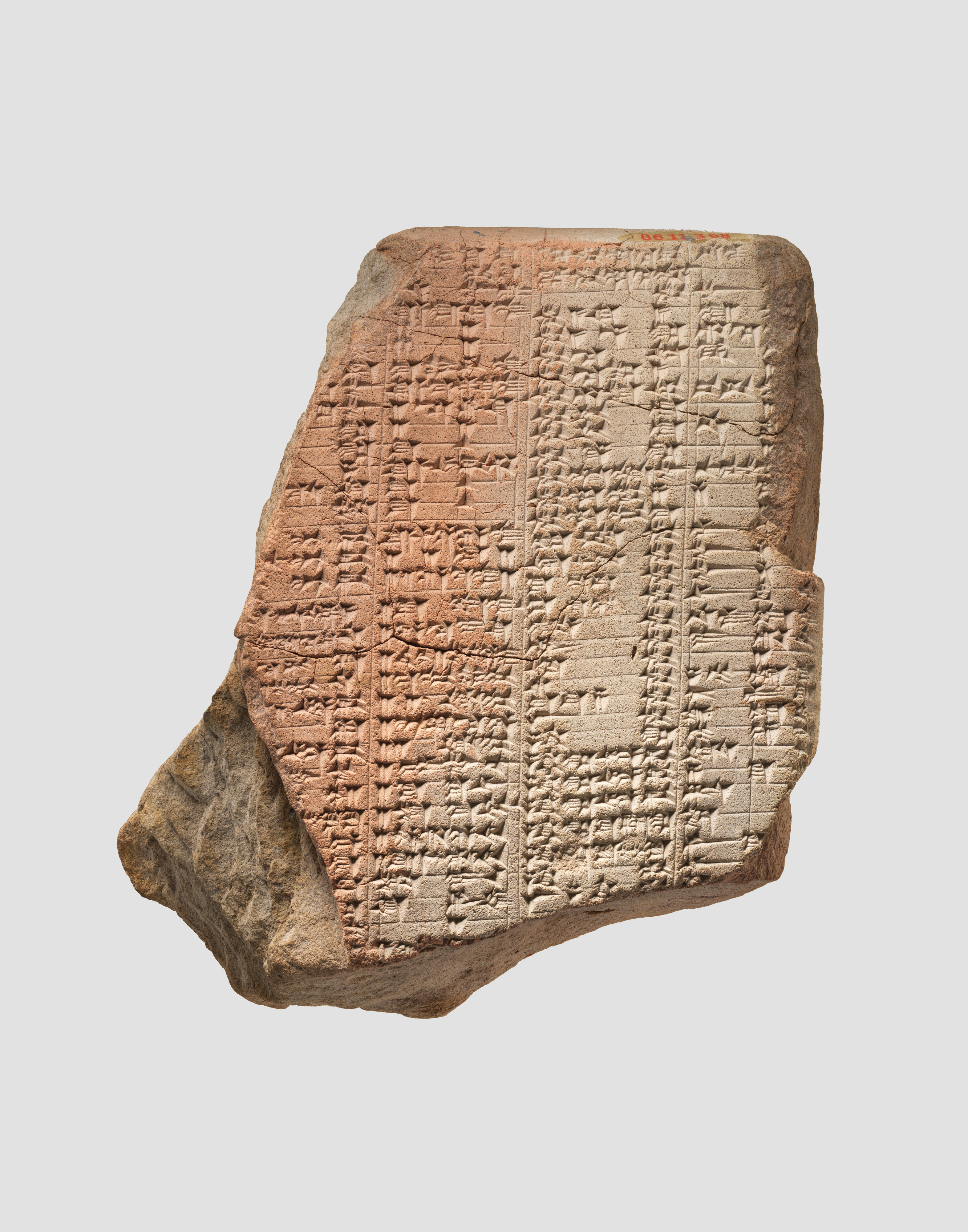Cuneiform tablet: vocabulary of food and drink terms, Urra=hubullu, tablet 23
Not on view
The invention of writing in approximately 3300 B.C. was one of many developments in administrative technology--including the use of geometric tokens for counting and cylinder seals to guarantee transactions--that accompanied the growth of the first cities and states in southern Mesopotamia. Proto-cuneiform is the name given to the earliest form of writing--pictograms that were drawn on clay tablets. Gradually, the pictograms became abstracted into cuneiform (Latin, "wedge-shaped") signs that were impressed rather than drawn. At its greatest extent, cuneiform writing was used from the Mediterranean coast of Syria to western Iran and from Hittite Anatolia to southern Mesopotamia. It was adapted to write at least fifteen different languages. The last dated cuneiform text has a date corresponding to A.D. 75, although the script probably continued in use over the next two centuries.
This clay tablet, partially broken, is divided into three columns which read from left to right. The tablet records food and drink terms, first in the long-dead Sumerian language, and then in Akkadian translation. This text is known to be the twenty-third tablet in a series of tablets that collected and codified knowledge of the civilized world. Beer and food items listed in this text were an essential part of ritual knowledge as they formed the basis for the daily feeding of the gods in their temples.
Due to rights restrictions, this image cannot be enlarged, viewed at full screen, or downloaded.
This artwork is meant to be viewed from right to left. Scroll left to view more.








